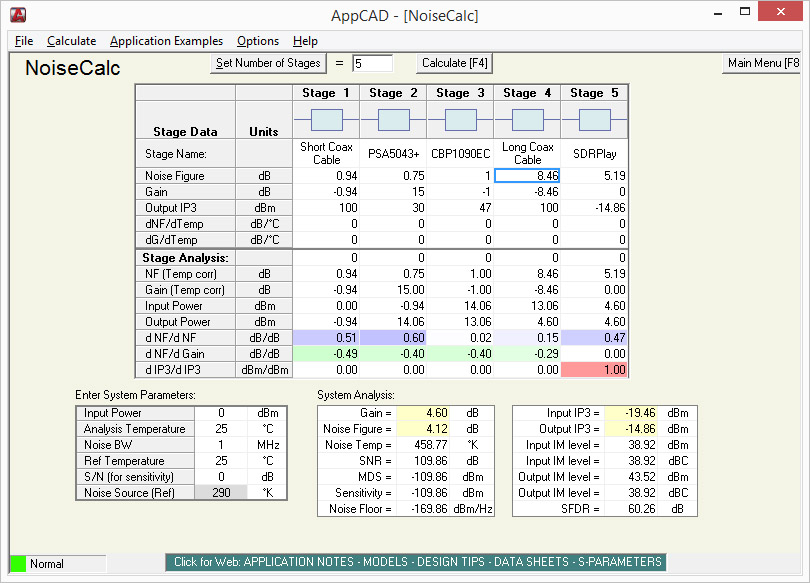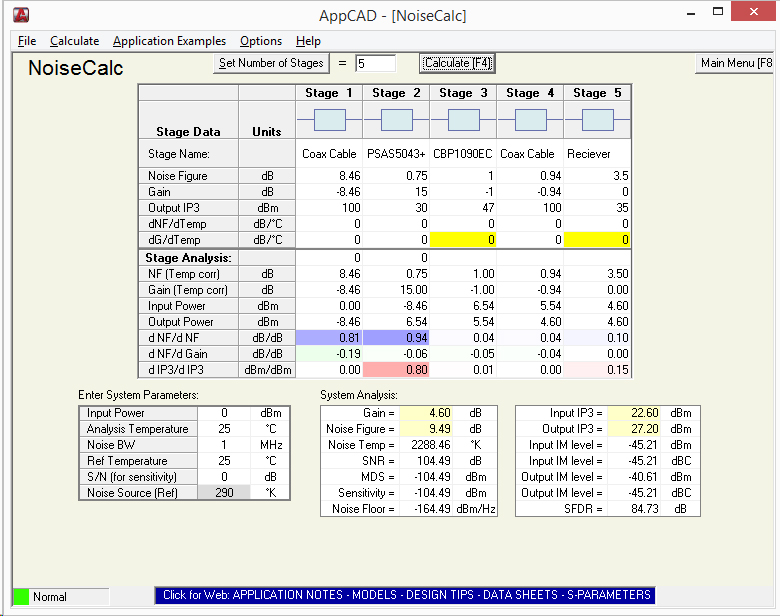Stick a preamp in front of your radio. Will make reception better right ? Well, as with most things in life its not as simple as that. It may have a beneficial effect but it depends on a number of factors, where your preamp is and what your radio is.
Let me explain. Its about the signal to noise, not the gain. Gain is helpful but the noise figure (NF) and the linearity (IP3) will ultimately determine the quality of your signal.
Wikipedia defines the NF as :
“Noise figure (NF) and noise factor (F) are measures of degradation of the signal-to-noise ratio (SNR), caused by components in a radio frequency (RF) signal chain”
Put simply as the signal passes from your antenna to your radio it will degrade in quality (S/N Ratio). You can mitigate against this with low loss coax and short runs but you are always going to get some loss. The end game is simple you need to keep that noise figure as low as possible to maintain the signal you’re actually interested in.
As for the IP3, Wikipedia defines it as:
“In telecommunications, a third-order intercept point (IP3 or TOI) is a measure for weakly nonlinear systems and devices, for example receivers, linear amplifiers and mixers.”
The linearity metrics used in the industry (IIP3 and OIP3) are a relatively complex subject (See here for a good article) but the thing to keep in mind is that the linearity of a system should be as high as possible. Lower linearity can cause overloading which will lead to a raise in noise floor, intermodulation products (spurs) and finally the desensitizing of the receiver.
Let’s consider a simple system:
Antenna -> 10 meters of Coax -> Receiver.
We are going to make some assumptions firstly we are considering 1090Mhz reception and the coax is RG174 (which is about 94db/100meters loss at 1090Mhz – don’t ever use RG174 for ADS-B !). The example radio will be an Airspy with a NF of 3.5db. For the purposes of the exercise the NF of coax can be assumed to be the same as the loss. Using Avago’s AppCad we can do a noise calc on the system:
So in this system we have a noise figure of 12.90db which is fairly large. So what happens if we stick a LNA in there near the antenna ? Let’s consider the following system :
Antenna -> 1 meter of Coax -> PSA5043+ -> CBP1090EC -> 9 meters coax -> Receiver.

I’ve broken the Uputronics Ceramic ADSB 1090Mhz Preamp into its base components, the PSA5043+ amp and the CBP1090EC Ceramic filter. The PSA5043+ has about 15db of gain at 1090Mhz. 
And look at that you’ve brought the NF down to 3.45db which is a large improvement over the system without significantly compromising the linearity (IIP3).
Conversely let’s consider what happens when you plug the preamp in next to your radio:
Antenna -> 9 meter of Coax -> PSA5043+ -> CBP1090EC -> 1 meters coax -> Receiver.
The linearity is very good at an IIP3 of over 22dBm, but… See the NF ? 9.49db nearly as bad as the system with no preamp in it. At this level, the receiver could be considered “deaf”. You get the gain and the linearity but the NF is much higher. As you can see, having the preamp close to the receiver won’t improve the sensitivity.
Some receivers have an LNA in the radio itself. So what happens if you plug a preamp into a radio that already has a LNA like the SDRPlay or the FunCube Dongle?
Antenna -> 1 meter of Coax -> PSA5043+ -> CBP1090EC -> 9 meters coax -> LNA Equipped Reciever.
Taking the data from the SDRPlay datasheet here, at 1090Mhz with the internal noise figure NF is 5.19dB and the IP3 is -14.86dB. 
As you can see the noise figure (NF) is comparable to, but still higher than on a system with no preamp in the receiver. On the other hand, the linearity degraded dramatically to an IIP3 at -19dBm. This means even a moderate interferer can cause severe intermodulation, thus desensitizing the receiver.
In summary, a setup with a good antenna system connected to a receiver with a built in LNA:
- May not benefit from having a preamp at the antenna.
- The presence of a built in LNA is detrimental to the linearity and may degrade the signals.
So in conclusion:
- Put the preamp as close to the antenna as possible.
- Receivers with a built in LNA may not get the most out of an antenna system or preamp.
- Proper gain distribution guarantees better performance than one-size-fits-all solutions, both in terms of sensitivity and strong signals handling.






Antenna -> 1 meter of Coax -> PSA5043+ -> CBP1090EC -> 9 meters coax -> LNA Equipped Reciever.
Stage 5 shouldn’t have some gain?
Nope we are just considering the SNR/gain/IIP3 in the system before it hits the reciever not what happens when it gets inside the reciever.
Doesn’t the SDRPLay use the MGA-68563 LNA which has a 20 dBM OPI3 and 1 dB NF according to the datasheet? I thought that OIP3 that you used was for the LNA in the MIS001 chip which can be turned off.
It is my understanding it can’t be turned off and the details I used were sourced from the datasheet. Please understand this is not meant to be a criticism of SDRPlay I was just using it as an example they kindly supply the data (I didn’t have the data for the Funcube). P.S if you’re going to comment please us valid email addresses and names or I may not publish it.
Hello,
I am trying to use an LNA at the receiver side for the improvement of reception of HD/SD video signals. The LNA provides a gain of 8dB at 2.4GHz, which is frequency of interest. Both the transmitter & receiver side use a radio which is capable of driving upto 30dBm & has a sensitivity of -96dBm at MCS0. I have used a patch antenna of 15dBi at the receiver & a 5dBi antenna at the transmitter. I went through your blog & from the conclusions you have drawn, I wanted to know if my use of the LNA is futile & should I use an antenna of better gain at the receiver end. Thanks a lot for your time
Regards,
ARK
Hi Ark,
There are dedicated mast head LNA’s for video but as a rule of thumb more gain at RX end, LNA as close as you can to this. Its hard to say in your situation as I don’t know the physical layout, equipment etc.
Cheers
Is NF of cable = Loss in cable?
For the purpose of this article thats the assumption/approximation we’ve made.